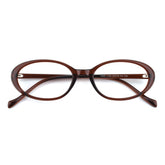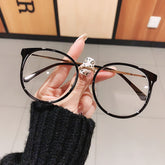What index is the most affordable and practical choice for you?
Do you feel headaches with so many choices of the index? Are more expensive and thinner lenses better for you?
The following is probably the most comprehensive guide you can find, and I hope this article will assist you.
Pick index according to prescription.
Most lens suppliers have index values of 1.56, 1.61, 1.67, and 1.74. If you find that some suppliers have values of 1.50, 1.57, etc., these are similar in thickness to 1.56.
Those with astigmatism between +2 and -2 can refer to the following values.
If your SPH is between -3 and +3, you can choose the 1.56 index. For SPH between -5 and +5, you can choose 1.61 or a similar value. For -7 to +7, it is recommended to select 1.67. For -10 to +10, it is recommended to choose 1.74. Choose a much higher index than the appropriate one with the same prescription. The thickness will not change as much as you think. For example, if your SPH is between -3 and +3 and the appropriate index is 1.56, a thinner lens would be 1.61.
The above is only for low astigmatism. If your astigmatism CYL is higher than 2, you must choose a higher index value.
We do not recommend choosing a lower index than the proper index. You will find yourself with thick and heavy lenses, which will bring a bad wearing experience. For example, if your SPH is -4 and the appropriate index is 1.61, choosing 1.56 is inappropriate. Don’t choose an unsuitable index just because of cheapness. It will make your glasses impossible to wear when you receive them.
Consider index selection based on eyewear habits.
The above is a case of choosing an index based on prescription only. The following case also needs to be taken into consideration.
Usually, people who need prescription glasses will have 2 or more pairs of glasses that they need to wear simultaneously, so you will need to consider the index of the other glasses when buying new glasses. Or if you only have one pair of glasses but want to buy new glasses, you need to consider the index of the glasses you are replacing. Because for the same prescription, different indexes will look and feel different. If it is 1.56 and 1.67, the visual difference is significant in this kind of index difference. If your prescription has not changed and you want to change to a new style of glasses, we recommend that you continue with the index you have previously purchased. You can refer to the previous paragraph on choosing an index based on your prescription. We recommend that you do not select a lens with an index less than the appropriate value.
If your eyeglass prescription has changed significantly, our advice is to try to choose the index according to the prescription. The right index will give you lenses of the right thickness and weight, but it will also be the best for your vision. If you have significant changes in prescription, we recommend replacing all the glasses and lenses you wear simultaneously. For example, if you need a pair of clear lens glasses and a pair of prescription sunglasses, your change in prescription has crossed the fit index. We recommend that you can repurchase both glasses. For example, your prescription changed from -2.5 to -4.5. It is best to replace
both with lenses with an index larger than or equal to 1.61.
Consider index selection from the style of the frame.
Of course, the prescription is the leading reference standard, and wearing habits need to be considered. However, the choice of index is slightly different for each frame. If you choose a frame with a standard or thick frame, and the lenses are not very large, you can select the index according to your prescription only. In particular, if you are nearsighted and choose a very large frame, you may need a higher index, at least one notch higher than the index of your prescription. Because myopic glasses are concave lenses, which will get wider the farther from the centre, the lens edges will be thick for larger-sized frames. But if you are far-sighted, that is, if you have a positive SPH, you can disregard this matter because the edges of the convex lenses will be thinner than the centre point.
If you choose a frame with thin edges, it’s best to choose one that fits the prescription index or one notch higher.
After all, if you still can’t figure out how to choose an index, you can choose to consult your doctor. Our customer service will recommend the most suitable index lens type according to your prescription and frame style. Please get in touch with us at our email service@sllac.com. Welcome to SLLAC.COM.











